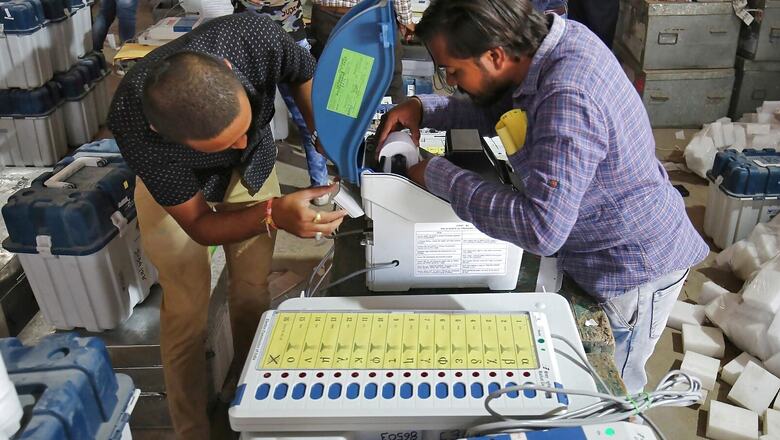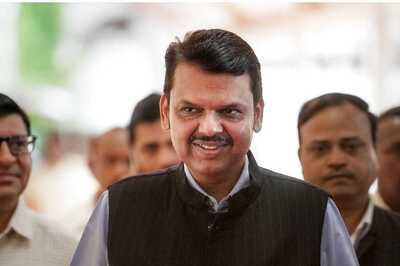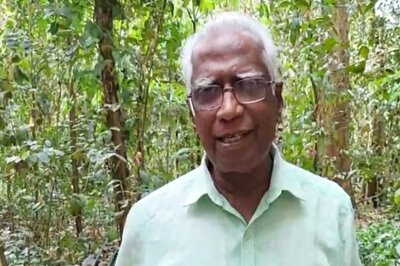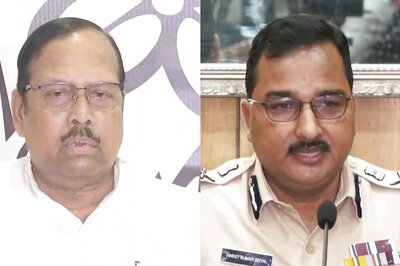
views
India is the world’s largest electorate with more than 89.78 crore registered voters. In addition to such large numbers, our cultural diversity and vast geography makes it a complex as well as an expensive task for political parties to engage and convince citizens to vote for them. It is an equally complex and intensive task for the Election Commission of India to organise a transparent, safe and operationally seamless election process.
There is another hard truth that we must begin to consider — the carbon footprint of a largely offline electoral exercise. This implies the cumulative and often irreversible damage caused to the environment by an activity. Due to the nature of the process — political leaders and aspirants have to make frequent use of fuel guzzling vehicles, both on road and in air, to reach the last mile. Millions of trees are chopped to produce paper and other raw materials used for flex banners, hoardings. Most of these materials used are neither biodegradable or recyclable. Political rallies are attended by lakhs of people which also means tonnes of litter including plastic that often never gets cleaned. Imagine the amount of precious fuel used and consequential harmful emissions if even 25% of the total number of voters used automobiles to reach polling booths. A similar estimation of emissions must be considered for functions such as transporting EVMs to and fro from polling stations as well as movement of supporting manpower. Now throw in a situation like Covid-19, which makes it hazardous for citizens to gather in large numbers to attend rallies. While we may hopefully not experience a pandemic like this for the next 100 years, it has certainly nudged all of us to question if there’s a better way. This is not just about India. A similar damage is caused during elections held in most densely populated developing countries, especially in South asia.
It is time we begin to reimagine elections. From paper ballots to EVMs to e-registration of voters — we need to explore technological innovations that make it seamless and less capital intensive to canvas, participate in and organise elections. But most importantly to ensure that the world’s largest and most complex election exercise reduces and in fact almost negates its impact on climate change. It would be paradoxical to ask for votes to improve the future, at the cost of it.
The United Nations has declared climate change as a global emergency. Millions of humans are at risk of being displaced due to events such as tsunamis, earthquakes, volcanic disruptions and extreme weather events. These are expected to occur with far greater frequency and intensity than before as we begin to pay for the cumulative cost of extensive industrialisation, mass consumption and unchecked emissions. To insulate future generations, billions of dollars are being invested towards developing more climate friendly means of production or consumption. For example, innovations such as plant-based meats, electric vehicles or remote working technologies will go a long way in balancing the ill effects of high carbon emitting activities. Similarly, we need to re-imagine the electoral process to be climate friendly, have minimal wastage of precious resources and with zero risk to the health and safety of voters as well as time saving. The metaverse platform and virtual/augmented reality can be a way for elections to be safer for people and the environment. In fact, it can also make the entire activity far more interactive, transparent and immersive. This initiative will also significantly contribute to achieving Prime Minister Narendra Modi’s commitment made at the Glasgow Climate summit to make India’s carbon emissions net neutral by 2070.
The seeds were already sown in 2014 when under the forward thinking leadership of PM Modi, India for the first time made use of social media and holographic projections as a way to bring political leaders closer to people without anyone having to actually travel at digital 3D rallies. The EC deferring rallies for the upcoming state elections in light of the pandemic will further accelerate digital adoption by parties.
An “election-verse” can be eventually created and be much more than citizens just wearing Virtual Reality glasses and seeing leaders make their pitch in a 3D life-like environment. One could literally immerse into the problems and solutions for a first-hand view of what a fulfilled manifesto or a progressive policy idea could look or feel like. For example, citizens could experience what it would be like living in a smart city or village before deciding to vote for a candidate who promises to transform their constituency into one. What could be even more game changing is you could actually cast your vote sitting at home because security verifications can be developed through iris scanners and biometrics — just like how we have digital registration and authentication mechanisms for banking or for digital signatures of directors in a company. Campaigning in a virtual election-verse means leaders can conduct more rallies and engage with more citizens in a day than present given there would be no need to spend precious time, money or fuel in travelling. It would be far easier for the EC to monitor adherence to the code of conduct since Artificial Intelligence-powered bots in this election-verse would be far more precise, objective and efficient at identifying false information or violations.
A move like this also puts an end to violence at polling stations especially in conflict zones. Furthermore, women especially in remote areas will also find it easy and safe to participate as voters. Another important advantage is that a pivot like this could further accelerate the reduction in the digital divide. Ed-tech, for example, nudged many people to buy smartphones to ensure children have access to education when schools were closed during the pandemic. There are many such possibilities and transformations, which a platform like this could kick-start. Of course, there are risks and challenges like for any innovation but like remote work — this is the future of elections and India needs to start laying the foundations for it.
Let’s bring the dream of one nation-one election one step closer!
—
The woods are lovely dark & deep,
But I have promises to keep,
And miles to go before I sleep…
And miles to go before I sleep…
Charu Pragya is a BJP politician and lawyer, and Samyak Chakrabarty is the Founder of X Billion Skills Lab. The views expressed in this article are those of the authors and do not represent the stand of this publication.
Read all the Latest Opinions here



















Comments
0 comment